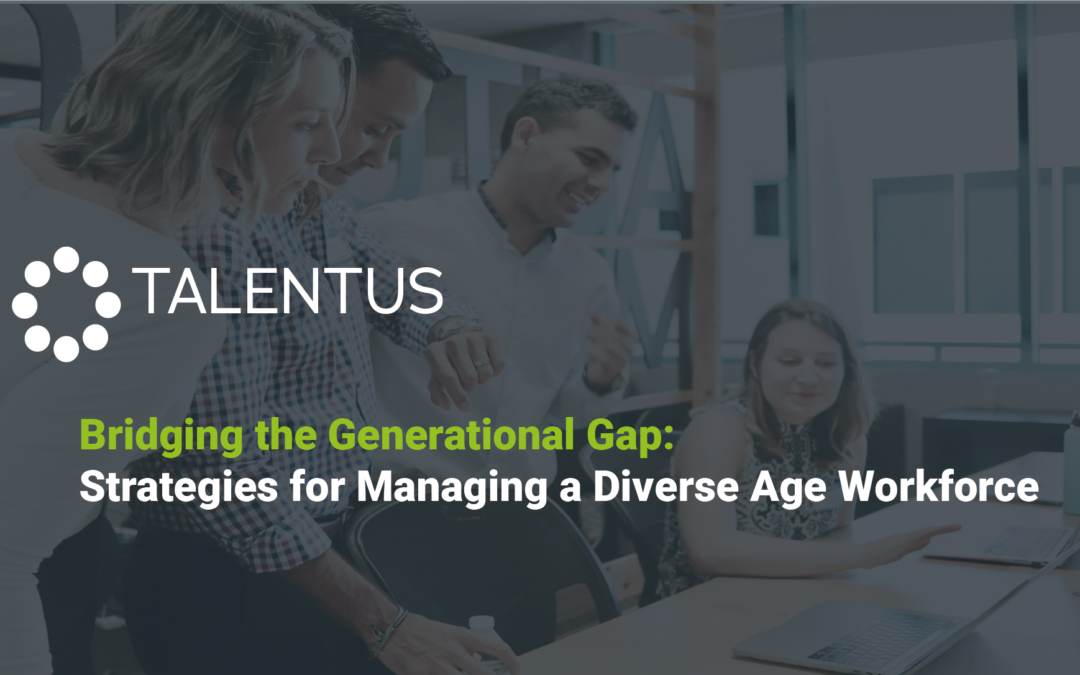In today’s workplaces, diversity goes beyond gender, race, and ethnicity. It also encompasses generational diversity, where employees from different age groups collaborate and contribute their unique perspectives. Managing a workforce with diverse age groups can be both challenging and rewarding. In this blog, we’ll explore strategies to foster a harmonious and productive work environment that bridges the generational gap.
Understanding the Generations
To effectively manage a multi-generational workforce, it’s essential to understand the characteristics and preferences of each generation. Here are the four primary generations currently in the workforce:
-
Traditionalists (born before 1946): These employees value loyalty, respect for authority, and job stability. They may prefer face-to-face communication and have a strong work ethic.
-
Baby Boomers (born 1946-1964): Baby Boomers appreciate job security, teamwork, and face-to-face communication. They often possess a wealth of experience and knowledge.
-
Generation X (born 1965-1980): Gen Xers are known for their independence, adaptability, and work-life balance. They appreciate feedback and opportunities for professional development.
-
Millennials (born 1981-1996): Millennials value work-life balance, flexibility, and meaningful work. They are tech-savvy and thrive on collaboration and constant feedback.
Now, let’s explore strategies for effectively managing this diverse age workforce:
-
Flexible Work Arrangements:
Recognize that different generations may have varying preferences for work arrangements. Offer flexible options such as remote work, part-time schedules, or flexible hours to accommodate various needs.
-
Mentorship and Knowledge Sharing:
Create mentorship programs where experienced employees can share their wisdom with younger colleagues. Encourage reverse mentoring, allowing younger employees to share their tech-savvy skills and knowledge.
-
Effective Communication:
Tailor your communication strategies to each generation’s preferences. While older generations may prefer in-person meetings, younger generations might favor email or messaging apps. Encourage open and transparent communication channels for all.
-
Recognition and Feedback:
Implement recognition programs that acknowledge employees’ contributions, regardless of their age. Offer regular feedback and career development opportunities to keep all generations engaged.
-
Collaborative Projects:
Encourage cross-generational collaboration on projects. This allows employees to learn from one another, leveraging diverse perspectives and experiences.
-
Training and Development:
Invest in training and development programs that cater to various learning styles. Offer both traditional classroom training and online courses to meet the diverse needs of your workforce.
-
Inclusive Company Culture:
Foster an inclusive and welcoming company culture that values diversity in all its forms. Create affinity groups or resource networks that allow employees to connect and share experiences.
-
Respect Differences:
Promote a culture of respect for differences, emphasizing that age diversity is an asset. Address any age-related biases or stereotypes that may arise in the workplace.
-
Benefits and Wellness Programs:
Provide benefits and wellness programs that cater to the diverse needs of your employees. Consider offerings like flexible healthcare plans, mental health support, and fitness options.
-
Feedback Loops:
Continuously gather feedback from your employees about their experiences in the workplace. Use this feedback to refine your strategies for managing a diverse age workforce.
Managing a diverse age workforce requires empathy, adaptability, and a commitment to creating an inclusive environment where every generation can thrive. By understanding the unique characteristics and preferences of each generation, implementing tailored strategies, and fostering a culture of respect and collaboration, your organization can harness the full potential of its multi-generational workforce. Embracing age diversity not only enhances productivity but also contributes to a vibrant and innovative workplace where employees of all ages can grow and succeed.

